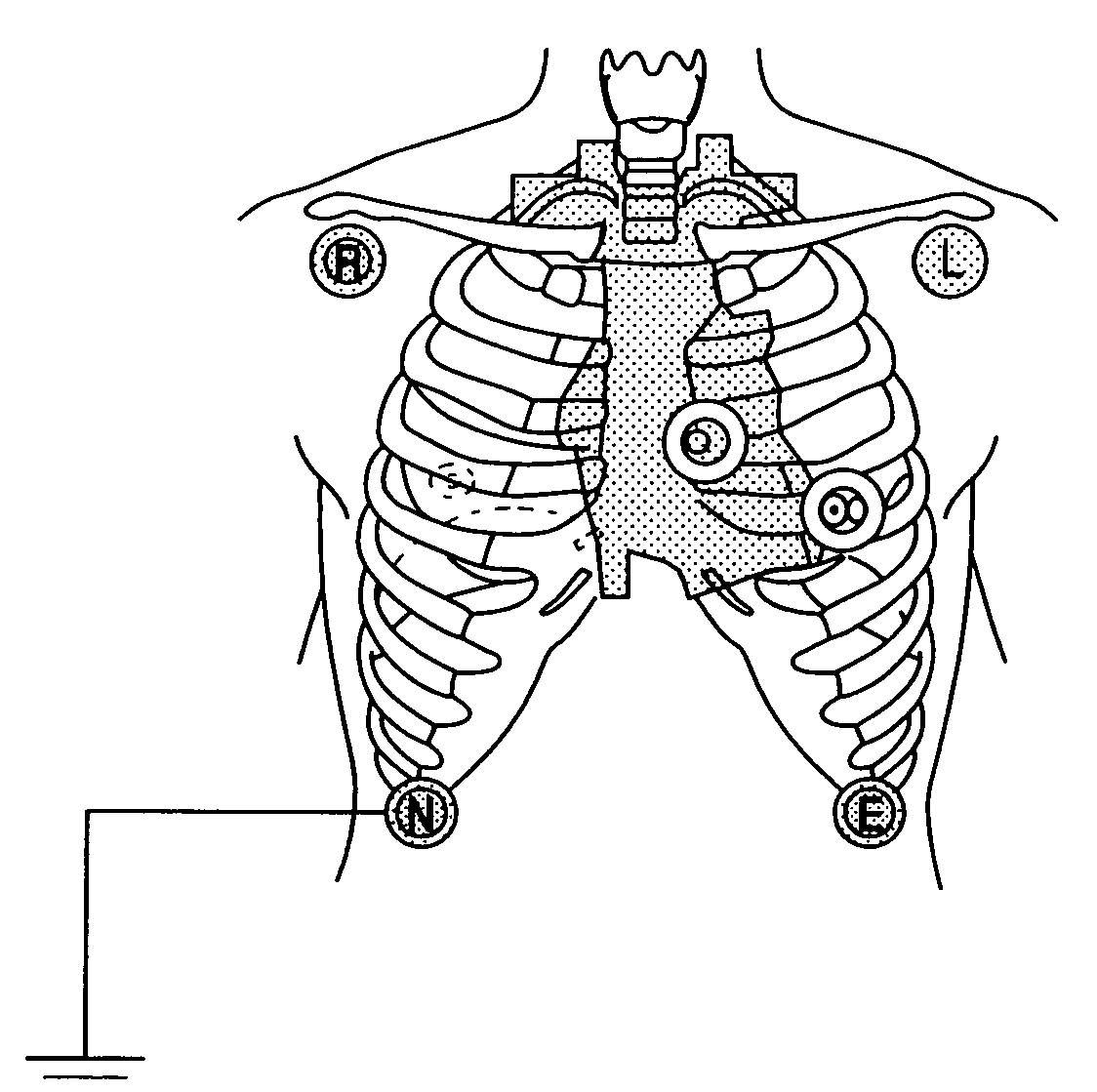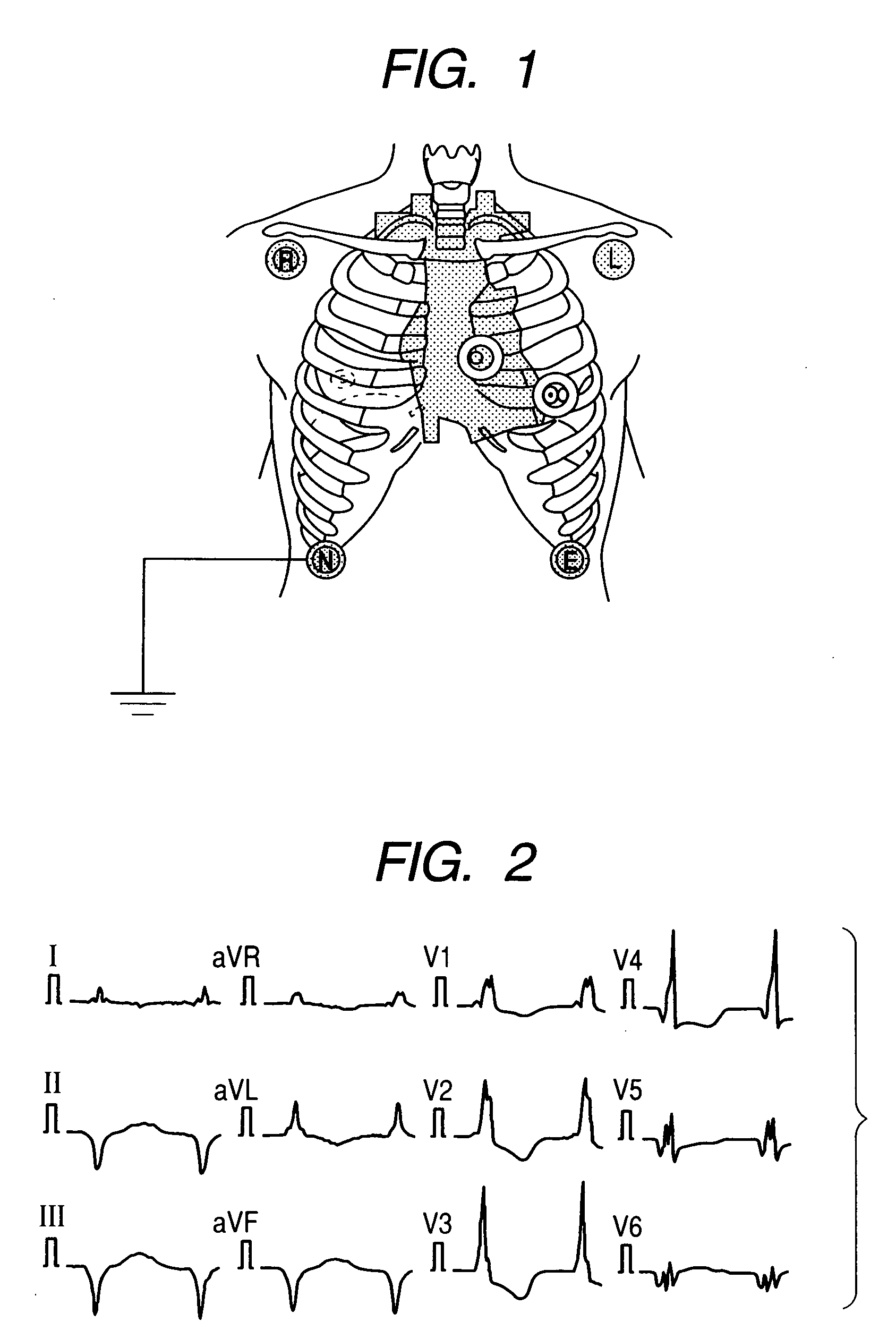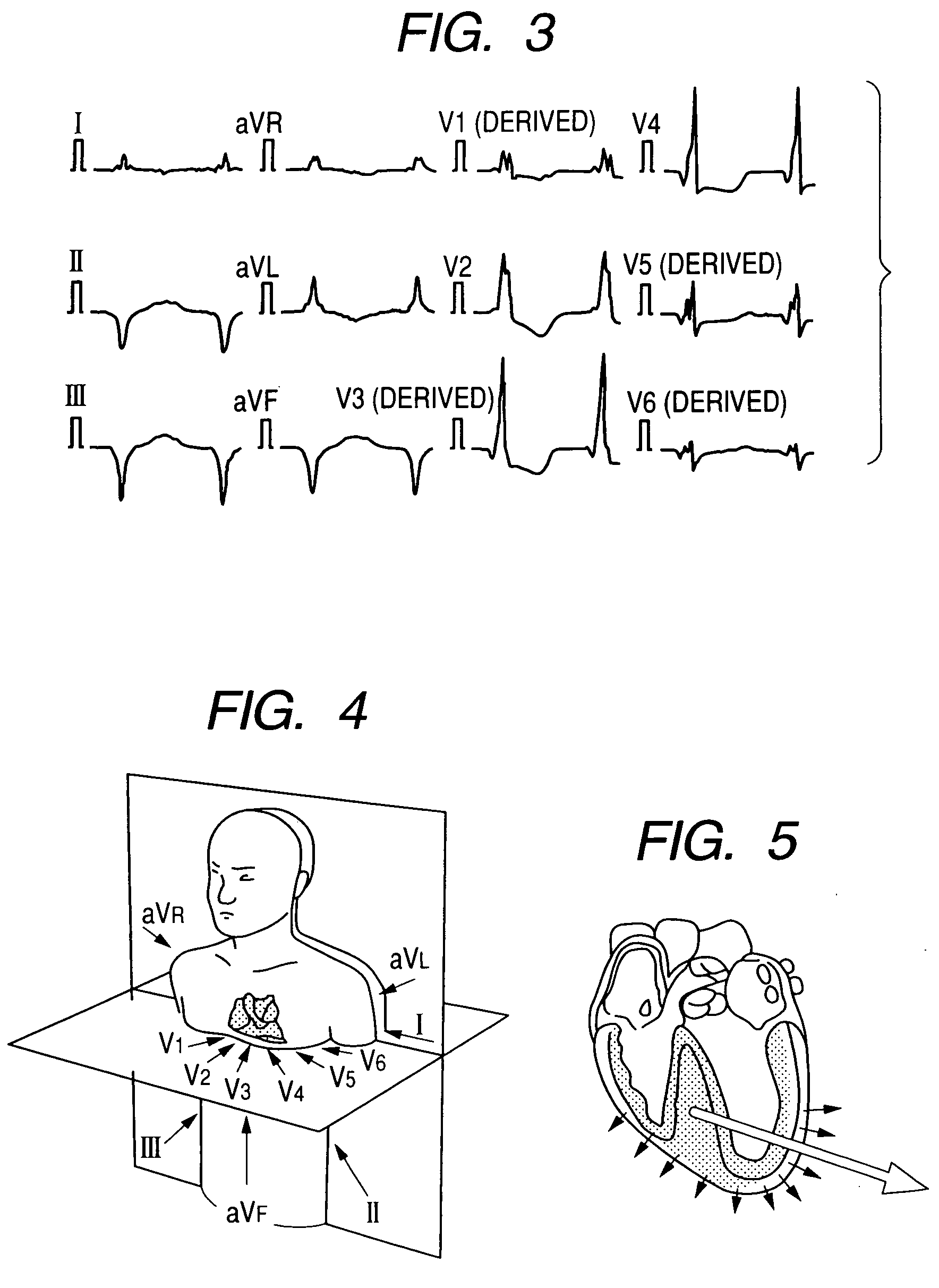Method for deriving standard 12-lead electrocardiogram, and monitoring apparatus using the same
a monitoring apparatus and electrocardiogram technology, applied in the field of deriving standard 12-lead electrocardiograms and monitoring apparatuses, can solve the problems of inability difficulty in transmitting a large number of lead waveforms in the form of multi-channel signals, and inability to provide time, etc., to achieve the detection accuracy of the electrocardiogram, achieve the effect of high accuracy, and achieve the effect of easy and effective attainmen
- Summary
- Abstract
- Description
- Claims
- Application Information
AI Technical Summary
Benefits of technology
Problems solved by technology
Method used
Image
Examples
Embodiment Construction
[0050] Embodiments of the present invention will be described below in detail with reference to the accompanying drawings.
[0051] A rationale for deriving a 12-lead electrocardiogram according to the invention is as follows. In a clinical electrocardiogram a standard 12-lead electrocardiogram is derived by detecting potentials on the basis of Table 1 in accordance with a lead theory. According to the theory, as shown in FIG. 5, an instantaneous electromotive force of the heart at an arbitrary time can be expressed by dipoles at fixed positions; and a potential (V) at an arbitrary lead position can be calculated from the following equation.
V=L·H (1)
where V denotes a potential matrix, H denotes a heart vector, and L denotes a lead vector.
[0052] The lead vector L of a person was measured by Frank as early as 1953 with use of an artificial human-body model, and this measurement has been recognized to be effective as a foundation of the current vector electrocardiogram. In addition,...
PUM
 Login to View More
Login to View More Abstract
Description
Claims
Application Information
 Login to View More
Login to View More - R&D
- Intellectual Property
- Life Sciences
- Materials
- Tech Scout
- Unparalleled Data Quality
- Higher Quality Content
- 60% Fewer Hallucinations
Browse by: Latest US Patents, China's latest patents, Technical Efficacy Thesaurus, Application Domain, Technology Topic, Popular Technical Reports.
© 2025 PatSnap. All rights reserved.Legal|Privacy policy|Modern Slavery Act Transparency Statement|Sitemap|About US| Contact US: help@patsnap.com



